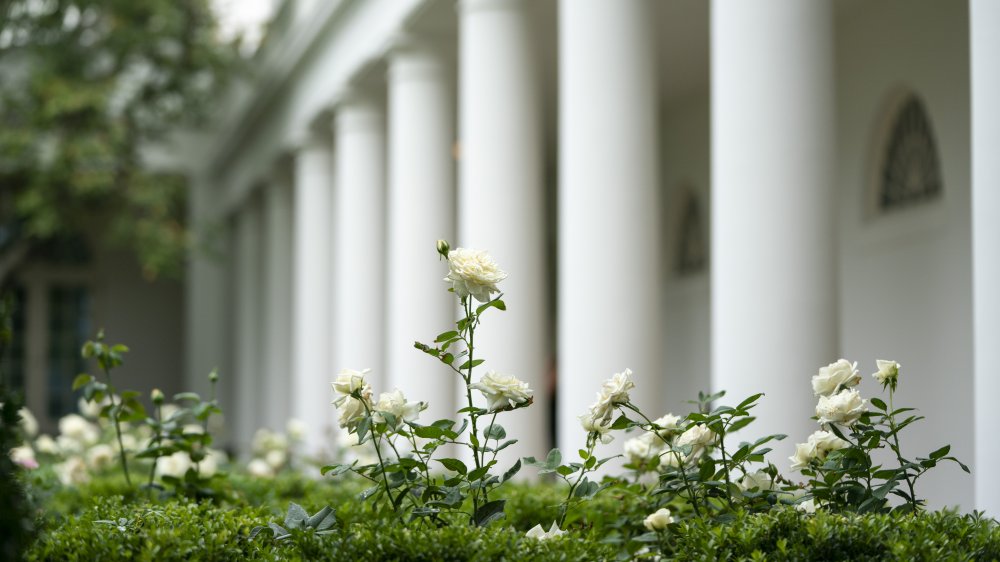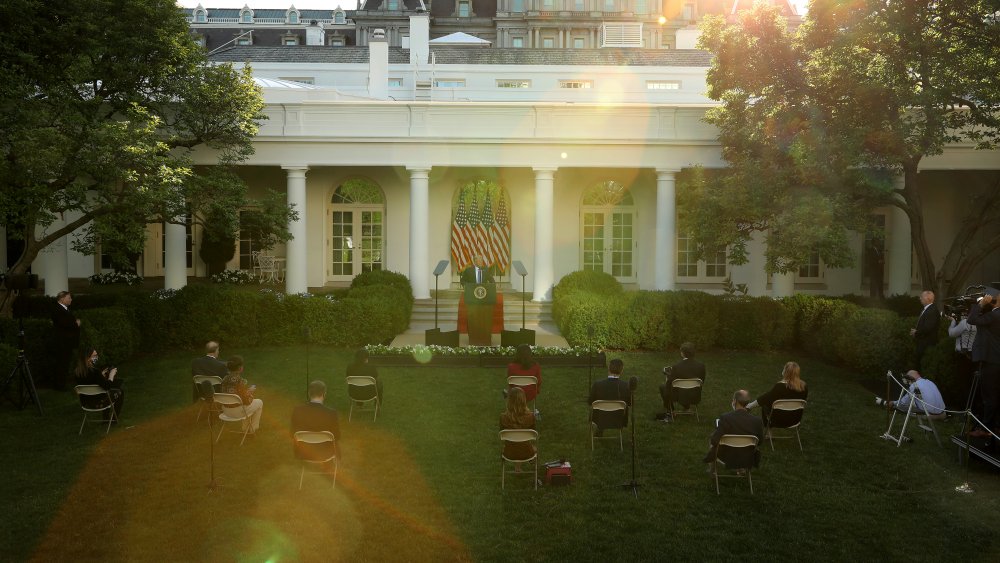The Fascinating History Of The White House Rose Garden
Apparently the Trumps have found yet another way to ensure their presence will be felt in Washington come February 2021, regardless of the election's outcome. On July 27, CNN echoed Melania Trump's announcement that she would have the White House Rose Garden redesigned in time to give her speech for the Republican National Convention on August 25. The statement given by Melania Trump betrayed no self-awareness of how conducting such a project in the midst of the pandemic might appear: "The very act of planting a garden involves hard work and hope in the possibility of a bright future." Sentiment aside, it does seem a bit like, as CNN contributor Kate Andersen Brower put it, a "another 'let them eat cake' moment".
ABC News ran an update a month later, noting that the new garden design features a lawn surrounded by limestone pathways and removed the ten crabapple trees to be replanted elsewhere on the White House grounds because they were casting too much shade on the flowers. Even though, as CNN notes, these changes would bring the garden back to the design originally cultivated by Woodrow Wilson's first wife Ellen in 1913, and continued by his second wife, Edith, people still fumed over the removal of the dozen or so crabapple trees, which had been planted at the behest of Jackie Kennedy. As People Magazine notes, the trees have been an iconic backdrop for the garden over the last half century.
An American symbol
When John F. Kennedy returned to the White House from his trip to Europe, a project came with him, lodged in his mind along with the memories of all the estate gardens he saw in England and France. Vanity Fair writes in their article on how the horticulturalist Rachel "Bunny" Mellon created the Rose Garden as we know it today after Kennedy explained his vision to her: "He wanted Bunny to create the perfect outdoor stage set as the backdrop for his presidency, and for every president to come. He envisioned not just a mere garden but rather an American symbol that would serve as an elegant and welcoming vista."
The extent of Bunny Mellon's success is witnessed by the phrase "Rose Garden Campaign," which was coined by Jimmy Carter in a fit of irritation as he ran against Gerald Ford in 1975. Essentially, a Rose Garden Campaign is when a sitting President uses the fact that they're the President as a serious benefit for their reelection campaign. Consider the Rose Garden setting: "The setting evokes presidential power and stability. It's an iconic location, and being photographed there sends a clear message to the public." So when a President is running a Rose Garden Campaign, they can simply sit in the symbolically heavy garden signing bills and by virtue of this, they appear more presidential. Well, now we will have to wait and see whether Melania Trump's redesign significantly alters the location's iconic status and the strategy's feasibility.

